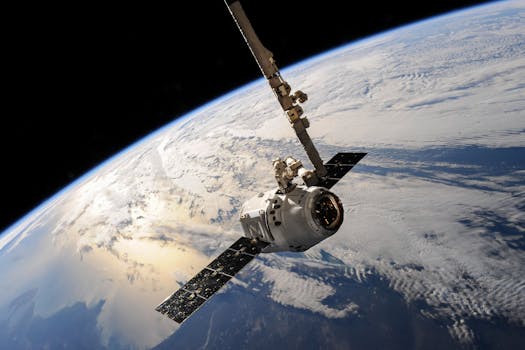Future of Satellites: Revolutionizing Global Connectivity
The future of satellites is poised to revolutionize global connectivity, enabling faster and more reliable communication networks. With advancements in space technology, satellites are becoming increasingly important for a wide range of applications, from navigation and communication to Earth observation and scientific research.

Future of Satellites: Revolutionizing Global Connectivity
The future of satellites is poised to revolutionize global connectivity, enabling faster and more reliable communication networks. With advancements in space technology, satellites are becoming increasingly important for a wide range of applications, from navigation and communication to Earth observation and scientific research. As the world becomes increasingly dependent on satellite technology, it is essential to understand the current trends and future developments in the satellite industry.
Advancements in Satellite Technology
One of the most significant advancements in satellite technology is the development of smaller, more efficient satellites. These satellites, known as smallsats or cube satellites, are designed to be launched at a lower cost and can provide a wide range of services, including communication, navigation, and Earth observation. Smallsats are also more agile and can be quickly deployed, making them ideal for a variety of applications, including disaster response and environmental monitoring.
Another significant development in satellite technology is the use of reusable rockets. Companies such as SpaceX and Blue Origin are leading the charge in reusable rocket technology, which is reducing the cost of launching satellites into space. This technology is also enabling the development of more complex and sophisticated satellite systems, including satellite constellations and mega-constellations.
Applications of Satellites
Satellites have a wide range of applications, from navigation and communication to Earth observation and scientific research. Navigation satellites, such as GPS, provide location information and timing signals, which are essential for a wide range of applications, including aviation, maritime, and land transportation. Communication satellites, such as geostationary satellites, provide telephone, internet, and television services to remote and underserved areas.
Earth observation satellites, such as Landsat and MODIS, provide critical information about the Earth’s climate, weather, and natural resources. These satellites are used for a wide range of applications, including environmental monitoring, disaster response, and agricultural management. Scientific research satellites, such as the Hubble Space Telescope, provide valuable insights into the universe, enabling scientists to study the formation and evolution of stars, galaxies, and planets.
Future Developments in Satellite Technology
The future of satellite technology is exciting and rapidly evolving. One of the most significant developments is the deployment of satellite constellations and mega-constellations. These constellations, which consist of hundreds or thousands of satellites, are designed to provide global coverage and enable a wide range of applications, including communication, navigation, and Earth observation.
Another significant development is the use of artificial intelligence and machine learning in satellite technology. AI and ML are being used to improve the efficiency and effectiveness of satellite systems, including satellite navigation, communication, and Earth observation. AI and ML are also being used to analyze the vast amounts of data generated by satellites, providing valuable insights into the Earth’s climate, weather, and natural resources.
Conclusion
In conclusion, the future of satellites is poised to revolutionize global connectivity, enabling faster and more reliable communication networks. With advancements in space technology, satellites are becoming increasingly important for a wide range of applications, from navigation and communication to Earth observation and scientific research. As the world becomes increasingly dependent on satellite technology, it is essential to understand the current trends and future developments in the satellite industry.




